MercoPress. South Atlantic News Agency
Tag: NASA
-
Monday, November 14th 2016 - 08:48 UTC
Supermoon, the closest since 1948, and won't be repeated until 2034
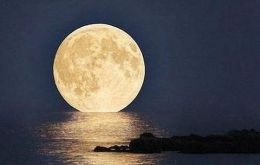
This month's bright supermoon — the closest full moon in 68 years — is expected to light up the sky early Monday morning, NASA has reported. Every year, scientists and sky watchers welcome the supermoon, which is the closest full moon of the year. But this year, the supermoon is receiving extraordinary attention.
-
Monday, April 4th 2016 - 06:52 UTC
Arctic sea ice recorded its lowest maximum level on record
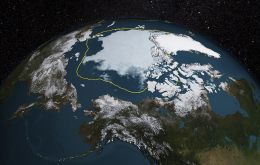
The growth of Arctic sea ice this winter recorded the lowest maximum level on record, prompting fears of faster climate change than previously expected. Unusually warm temperatures were said to be responsible for the shrinkage.
-
Thursday, January 21st 2016 - 07:59 UTC
Last year was the hottest in modern times since 1880, shattering 2014 record

2015 was by far the hottest year in modern times and raising new concerns about the accelerating pace of climate change. Not only was 2015 the warmest worldwide since 1880, it shattered the previous record held in 2014 by the widest margin ever observed, said the report by the National Oceanic and Atmospheric Administration.
-
Tuesday, December 22nd 2015 - 15:19 UTC
Huge asteroid will cross the sky on Christmas eve at 11m km from planet Earth
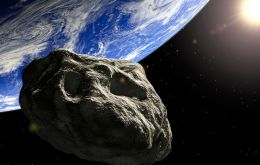
In a new twist to the old song, it’s Santa Claus who had “better watch out” on Christmas Eve, as he shares the night sky with a huge asteroid that will make its closest pass to Earth at about the same time the jolly old fellow is making his annual deliveries.
-
Thursday, April 23rd 2015 - 02:09 UTC
Record high temperatures over land and sea in March, says NOAA and NASA
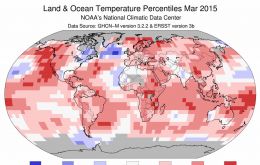
The globally averaged temperature over land and ocean surfaces for March 2015 was the highest for the month since record keeping began in 1880. The year-to-date (January–March) globally averaged temperature was also record high, reports the US National Oceanographic and Atmospheric Administration, together with data from NASA.
-
Sunday, November 9th 2014 - 09:52 UTC
Antarctic ozone hole reached annual peak 11 September and with the size of North America

The Antarctic ozone hole reached its annual peak size on Sept. 11, according to scientists from NASA and the National Oceanic and Atmospheric Administration (NOAA). The size of this year’s hole was 24.1 million square kilometers, an area roughly the size of North America.
-
Friday, April 25th 2014 - 23:19 UTC
NASA and BAS tracking major Antarctic iceberg, B31, now in open waters

NASA has lately spotted a gigantic iceberg in Antarctica, identified as B31 and together with UK's BAS (British Antarctic Survey), is busy tracking the monster island of ice, which has now escaped into open waters. Despite its sheer size and mass, --experts estimate that the giant iceberg is approximately 600 square kilometres in size--, monitoring is not going to be an easy task with the coming of the Antarctic winter and ensuing darkness.
-
Wednesday, February 19th 2014 - 05:04 UTC
Small meteorite bang spreads fear of mini earth tremor in central Argentina
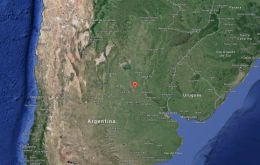
Argentine space expert Jorge Coghlan said that the huge bang heard on Tuesday and that scared many people in central Santa Fe province was caused by a “meteorite which disintegrated on entering the atmosphere and thus caused a major vibration”. The incident was reported early mid morning.
-
Tuesday, October 29th 2013 - 00:13 UTC
NASA solves the mystery of a “city of lights” in the South Atlantic night: jiggers
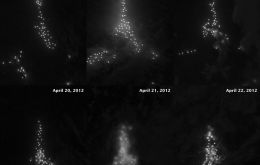
When in December 2012, the NOAA National Geophysical Data Center and the NASA Earth Observatory released a new map of the Earth as it appears at night they “found something fishy off the coast of Argentina” but now the mystery has been solved. About 300 to 500 kilometers offshore, a city of light appeared in the middle of the South Atlantic Ocean. There are no human settlements there, nor fires or gas wells. But there are an awful lot of fishing boats.
-
Tuesday, October 29th 2013 - 00:10 UTC
Ozone hole slightly smaller than average this year, according to NASA
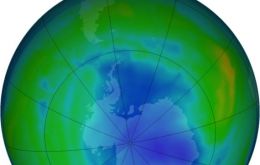
The ozone hole that forms each year in the stratosphere over Antarctica was slightly smaller in 2013 than average in recent decades, according to NASA satellite data. The ozone hole is a seasonal phenomenon that starts to form during the Antarctic spring (August and September). The September-October 2013 average size of the hole was 8.1 million square miles (21 million square kilometers).
